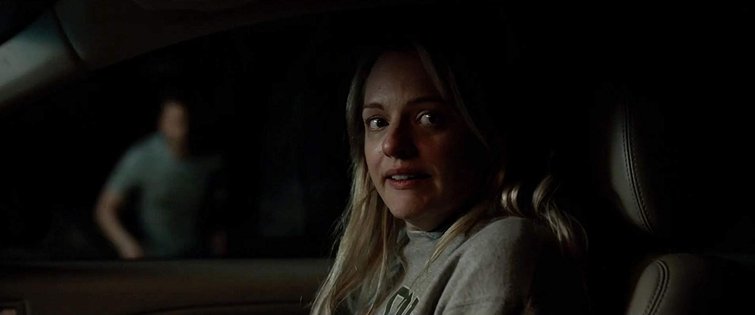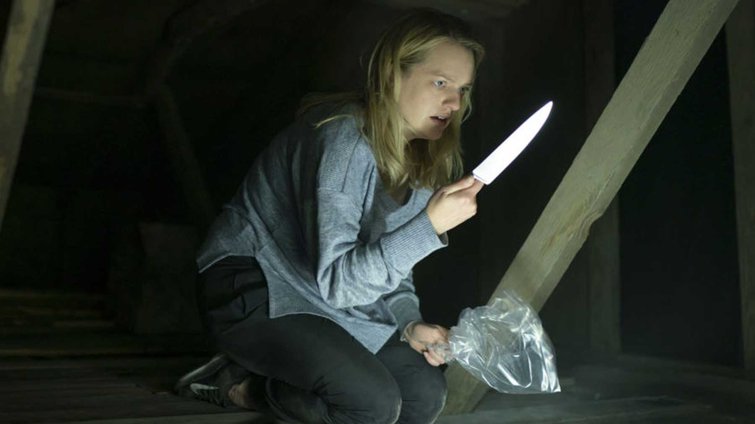
What “The Invisible Man” Can Teach Aspiring Suspense Filmmakers
Here’s a lesson on budget genre-filmmaking done right, and why you should trust your instincts by focusing on the unseen.
I’ve never been a big horror guy. And, to be perfectly honest, I grew up avoiding most movies that tended to even have horror elements. Maybe it was due to the trauma of watching Child’s Play at a much-too-early age, or maybe it just didn’t appeal to me. Whatever it was, I’m sorry that I avoided it all, as I’ve come to embrace the movies that make the viewer feel the most uncomfortable.
And, this most recent adaptation of the famous H.G. Wells’ novel The Invisible Man certainly fits the bill. Not just with me, though. It’s been overwhelmingly received by both fans and critics alike, with a 91% critics rating on Rotten Tomatoes and has grossed $143.2 million worldwide.
However, it’s not just critics and audiences who have relished in the uncomfortableness of The Invisible Man. Despite his decades of success with mega-horror franchises like Saw and Insidious, writer and director Leigh Whannell provides a great lesson in how to overcome dubious producers and cynical test-audiences, as well as a nice example of how aspiring genre filmmakers can create suspense-filled, story-focused elevated horror to the delight of critics and audiences, alike.
A Focus on Suspense

Without going into spoilers, the synopsis for The Invisible Man is as follows:
“When Cecilia’s (Elisabeth Moss) abusive ex (Oliver Jackson-Cohen) takes his own life and leaves her his fortune, she suspects his death was a hoax. As a series of coincidences turn lethal, Cecilia works to prove that she is being hunted by someone nobody can see.”
The property has been adapted into more than one direct feature film, as well as numerous sequels, spin-offs, inspirations, and television series over the years. And, while the genres have changed, at its heart the story has always been one that focuses on suspense and the terror of the unseen.
Suspense is a hallmark of film and cinema, dating back through Alfred Hitchcock, Mary Harron, and David Fincher. For those interested in some practical tips for shooting suspense, here are some great resources.
- 3 Directing Tips For Adding Suspense to Your Thriller
- Filmmaking 101: Creating Tension and Suspense in a Sequence
- 5 Tips for Building Better Cinematic Suspense
A Compelling Story over Big Effects

In a great interview with The Hollywood Reporter, Whannell opens up about his writing and filmmaking process for The Invisible Man. Most intriguing for aspiring filmmakers, though, might be the section where he reveals what happened after initial test-screenings. Both audiences and producers wanted to “see more” of the past relationship between the two main characters.
“I’m never going to be able to write a scene that will make Adrian as scary as the audience can make him. In my mind, I hoped that Cecilia’s reactions, and the way she was acting, told you everything you need to know.”
However, Whannell had to stick to instincts and insist on focusing on his principles of suspense and horror. Instead of a big, heavy-handed opening sequence (or too many flashbacks), we are simply dropped into the opening action. The audience is left to imagine all the possible reasons for Cecilia’s fear of Adrian.
How to Challenge the Audience

And, it’s safe to say that Whannell’s gamble paid off. Despite those early test-screening notes, audiences and critics have responded to the suspenseful and horrific elements of The Invisible Man. Not that Whannell had his producers too worried. The majority of his scripts and films proved that challenging low-budget genre indies can produce blockbuster results.
From the work with his filmmaking partner James Wan, the duo have consistently found success in turning roughly ten million dollar budget features into hundreds of millions at the box office. Which Whannell credits, in the same interview, as a meticulous focus on “not doing the obvious thing.”
So, if you’re interested in breaking into the industry, following the suspense and horror low-budget model is as great a path as any.
As a bonus, our friends over on Shutterstock Tutorials recently published a video that will help you set the tone with horror lighting.
For more suspense and genre filmmaking tips, tricks, and interviews, check out these articles below.
Cover image via Universal Pictures.





